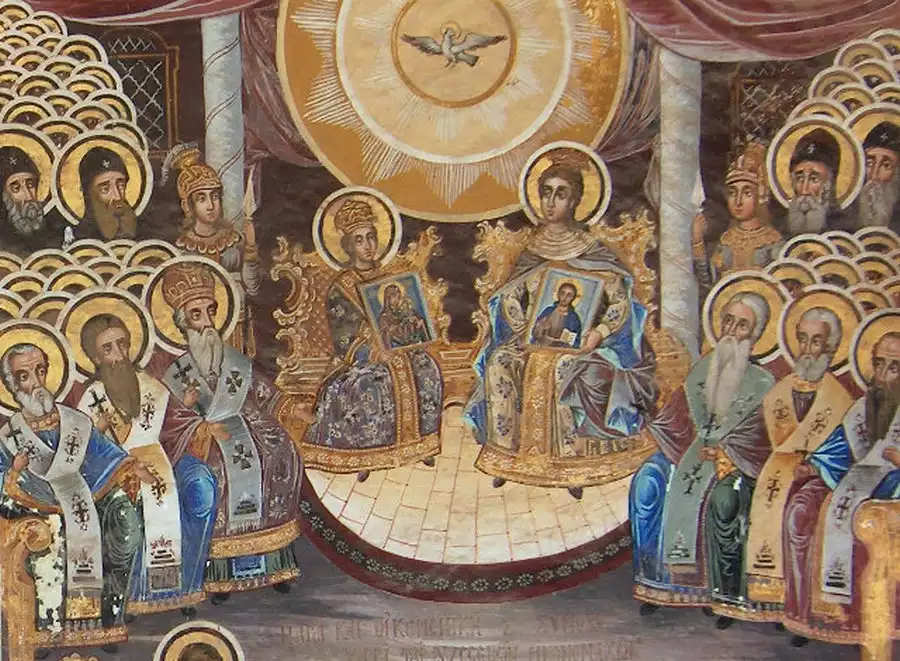
The legal status of Christianity in the Roman Empire during the first three centuries AD is complex. While there was no specific law targeting Christians, persecutions began in the apostolic era under Nero and continued intermittently until the early 4th century. Initially viewed as a Jewish sect, Christians were exempt from requirements to participate in Roman state religion. However, as Christianity distanced itself from Judaism, relations worsened. Powerful Jews in Rome likely contributed to an increasingly negative view of Christianity among authorities. Without a defined legal status, Christians were vulnerable to expansive interpretations of existing laws against illegal associations. Allegations of crimes were often vague or based on hearsay. The appellations of Christianity as a “detestable,” “new” or “foreign” superstition denied its legitimacy and justified persecution without needing special decrees. Christians were thus persecuted based primarily on confessing the name of Christ rather than proven crimes.
Early Persecution Under Nero
The first documented persecution of Christians was under Nero in 64 AD following the Great Fire of Rome. While Nero apparently used Christians as scapegoats, the historian Tacitus indicates they were viewed as “haters of mankind.” Pliny the Younger likewise called Christianity a “detestable superstition.” Suetonius categorized it as a “new and dangerous superstition.” This hostile view justified persecution without specific charges. While some Christians were accused of general crimes, even the official Pliny connected persecution to Christianity’s status as a banned sect rather than criminal acts. Without legal recognition, Christians’ refusal to worship Roman gods or the emperor made them targets. Yet persecutions were local rather than empire-wide. Still, Tertullian’s “Neronian Policy” indicates that Nero’s actions established an informal model for anti-Christian attitudes among later emperors.
Legal Basis for Persecution
In the first two centuries AD, Christianity’s status as an illicit “superstition” rather than legal religion allowed persecution without special decrees. Christians were seen as members of a dangerous “new” sect that undermined social order. Hence Tacitus described them as “haters of mankind.” Accusations of vague crimes like incest or cannibalism arose from rumors about Christian rituals. More seriously, Christians’ rejection of Roman gods and the imperial cult was considered disloyal or even treasonous. Yet early persecutions were not formally based on charges of sacrilege or treason against Christians who refused to worship the emperor. Rather, authorities connected Christian persecution to existing bans on illegal associations. Roman officials prosecuted Christians for membership in a forbidden sect rather than proven sedition or other crimes. Local officials had latitude to enforce anti-association laws harshly against this reviled faith without new imperial policies. Sporadic persecutions spread as Christian groups grew across the empire.
Apologists’ Defenses
Early Christian apologists like Justin Martyr responded to Roman accusations in their writings. They argued that Christianity was not new, but the fulfilment of ancient Jewish prophecy. Some suggested its origins were even older than Greek philosophy and Roman religion. Apologetics stressed Christians’ pious ethics and lack of criminal activity compared to lurid public allegations. Many apologies petitioned emperors to halt unjust persecutions. Legal expert Tertullian argued that being a Christian was not itself a crime and should not be punishable. Apologists also explained Christians’ reasons for rejecting Roman gods and the imperial cult while still being loyal subjects who prayed for the emperor’s welfare. Some blamed Jewish jealousy for Christian persecution. Overall, these defenses aimed to secure legal recognition for Christianity as a legitimate ancient belief system rather than a dangerous new cult. Granting Christianity legal status was deemed necessary to end persecutions based on religious identity.
Evolving Legal Status and Sporadic Persecutions
While apologists argued their case to emperors, the legal status of Christianity remained uncertain through the 3rd century. The lack of defined policies created an ad hoc approach to persecution that varied across the empire. Some emperors actively persecuted Christians, motivating officials to prosecute them. But other emperors discouraged or banned local persecutions, heeding Christian defenses. Practices evolved, with sacrifice to the Roman gods or emperor increasingly mandated by the 3rd century to prove loyalty and force Christians to publicly recant their exclusive faith. Persecution grew as Christianity expanded among all classes. Yet, there was still no empire-wide enforcement. Due to the decentralized nature of the Roman legal system, much depended on the inclination of local officials to target Christians as an unrecognized cult denying Roman religion. Sporadic persecutions persisted based on Christian adherence to an illicit religion rather than proven individual crimes. It was not until Constantine’s Edict of Milan in 313 that Christianity achieved full legal recognition and tolerance across the Roman Empire.
Conclusion
In conclusion, the ambiguous legal status of Christianity in the first three centuries AD led to intermittent persecutions under the Roman Empire. As an unrecognized new faith perceived as dangerous, Christianity was vulnerable to prosecution under existing laws banning illegal associations. However, there were no universal policies on Christianity or consistent enforcement, as evidenced by periods of relative tolerance. Prosecutions relied more on confessing the name of Christ itself rather than proven criminal acts. Persecutions expanded with the growth of Christianity but remained sporadic and localized. While apologists argued against misconceptions and for tolerance, Christianity lacked formal imperial recognition as a legal religion. As such, Christians were unprotected from restrictive interpretations and selective enforcement of laws on banned sects by local Roman officials. The church endured centuries of persecutions before Constantine’s edict finally granted Christianity full legal rights and protections across the Roman Empire. This ambiguous early legal status was a defining challenge as the early church sought to grow and spread within the Roman world.
References
Ferguson, Everett. Backgrounds of Early Christianity. Eerdmans, 2003.
MacMullen, Ramsay. Christianizing the Roman Empire (A.D. 100-400). Yale University Press, 1986.
Wilken, Robert L. The Christians as the Romans Saw Them. Yale University Press, 2003.
